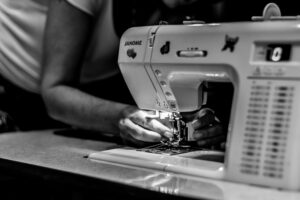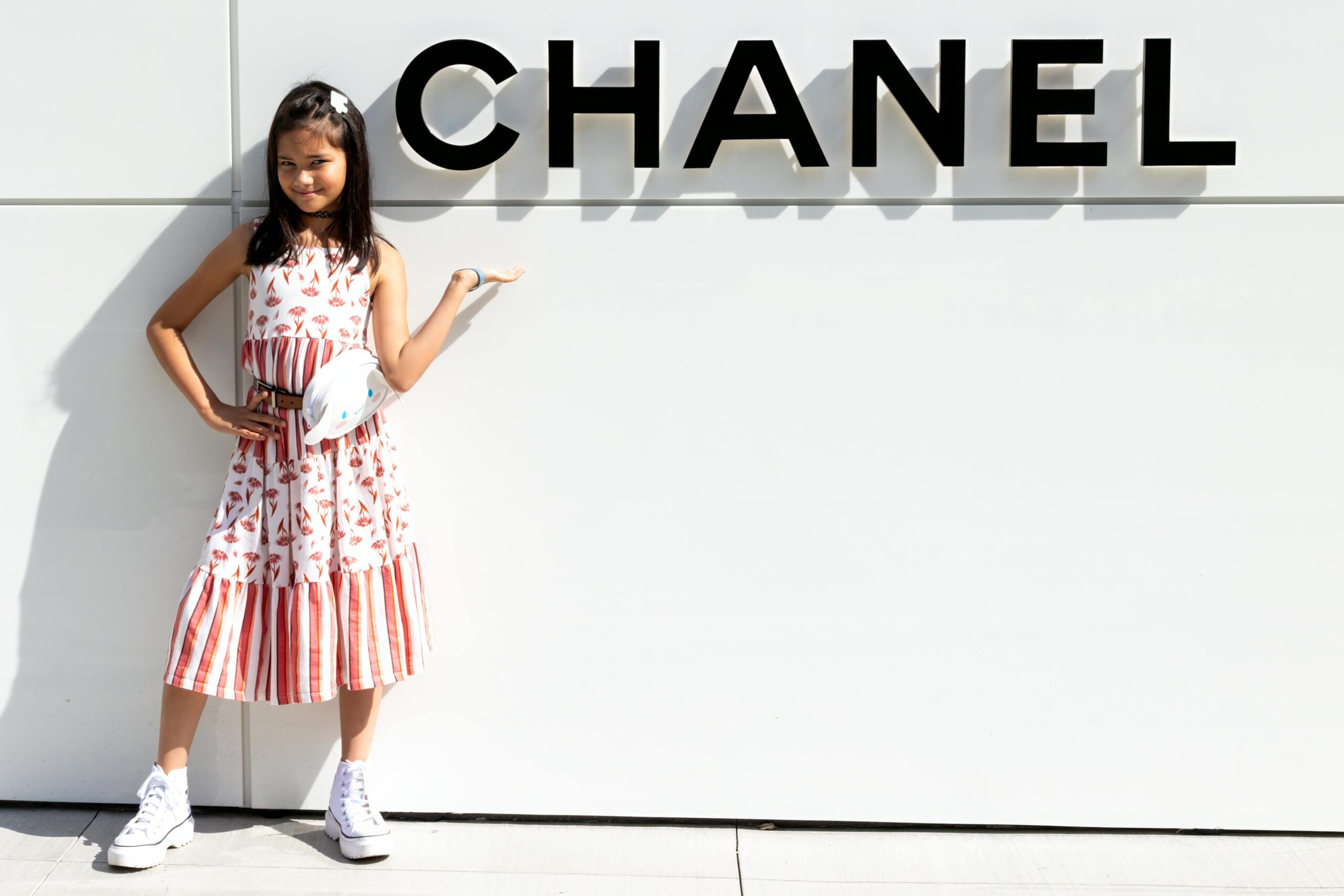Introduction
 The fashion industry is made up of hundreds of thousands of designers, creative directors, artisans and labourers who all work in conjunction to produce articles of clothing for consumption. Some design the clothes, some work either to handcraft or mass produce them. Others are involved in advertising and marketing the item to reach its desired target demographic. However, the creativity and innovation underlying fashion design does not end at the stage of sale. It is not true that an item arrives at its ultimate pinnacle of design upon the conclusion of the production process. After reaching the hands of the purchaser, there exists avenues for the product to be redesigned, with the first sale simply acting as an opportunity for expansion of creatively reimaging the already existing item. Especially in the current age, where the threat of environmental degradation and climate crisis are constant companions, this reimagination is gaining more mainstream popularity in the form of clothing upcycling. But this practice is accompanied by concerns about intellectual property rights of creatives and designers.
The fashion industry is made up of hundreds of thousands of designers, creative directors, artisans and labourers who all work in conjunction to produce articles of clothing for consumption. Some design the clothes, some work either to handcraft or mass produce them. Others are involved in advertising and marketing the item to reach its desired target demographic. However, the creativity and innovation underlying fashion design does not end at the stage of sale. It is not true that an item arrives at its ultimate pinnacle of design upon the conclusion of the production process. After reaching the hands of the purchaser, there exists avenues for the product to be redesigned, with the first sale simply acting as an opportunity for expansion of creatively reimaging the already existing item. Especially in the current age, where the threat of environmental degradation and climate crisis are constant companions, this reimagination is gaining more mainstream popularity in the form of clothing upcycling. But this practice is accompanied by concerns about intellectual property rights of creatives and designers.
What is Upcycling
 The fashion industry is one of the largest producers of waste in the world, making it imperative for clothing items that already exist in the fashion economy to be utilised to their fullest extent. This can be done in numerous eco-conscious ways that are aimed towards extending the lifespan of items, like thrifting and second-hand consignment shopping. Upcycling is a prominent method through which clothes can gain a new life. This process involves pre-existing clothes and accessories being refashioned into new and innovative pieces. Upcycling is mainly done in two ways- either by utilising components of the original products to make new goods, or by adding elements onto an existing product. Since the original product is being improved upon, it gains additional value. A distinctive benefit to upcycling is that due to the updation being done on already manufactured base products, each individual item is often limited in stock, making each design uniquely desirable to consumers.
The fashion industry is one of the largest producers of waste in the world, making it imperative for clothing items that already exist in the fashion economy to be utilised to their fullest extent. This can be done in numerous eco-conscious ways that are aimed towards extending the lifespan of items, like thrifting and second-hand consignment shopping. Upcycling is a prominent method through which clothes can gain a new life. This process involves pre-existing clothes and accessories being refashioned into new and innovative pieces. Upcycling is mainly done in two ways- either by utilising components of the original products to make new goods, or by adding elements onto an existing product. Since the original product is being improved upon, it gains additional value. A distinctive benefit to upcycling is that due to the updation being done on already manufactured base products, each individual item is often limited in stock, making each design uniquely desirable to consumers.
A type of upcycling that has gained popularity in previous years is that of upcycling designer goods. Artists sell products that utilise branded goods from luxury fashion houses like Gucci, Chanel, Balenciaga etc. as its constituent materials. These products often include the iconic brand identifiers of these luxury houses, like the double C clasps of Chanel and the LV print of Louis Vuitton bags. As the reworked article includes these trademarked elements in their design, they may infringe on the intellectual property rights of the original designers.
(Il) Legalities of Upcycling
 Brands who hold registered trademarks of certain patterns and logos can claim trademark infringement against artists who utilise such marks on their upcycled products without authorisation. One of upcycling’s central issues is that it creates confusion amongst consumers about the origin of the product. Customers may fall into the trap of buying an upcycled handbag or jacket under the belief that it is produced by the brand themselves.
Brands who hold registered trademarks of certain patterns and logos can claim trademark infringement against artists who utilise such marks on their upcycled products without authorisation. One of upcycling’s central issues is that it creates confusion amongst consumers about the origin of the product. Customers may fall into the trap of buying an upcycled handbag or jacket under the belief that it is produced by the brand themselves.
 We can utilise a case study of the beloved luxury brand, Chanel, to further understand this issue. In 2024, Chanel Inc filed a case of trademark infringement against Shiver + Duke LLC, for their usage of vintage Chanel buttons. These buttons, which once belonged on clothing items like jackets, were upcycled into jewelry, which Chanel said looked similar to the brand’s own offerings. The company claimed that by Shiver+Duke putting out designs that featured Chanel’s trademarks, consumer confusion was likely being created in the market.
We can utilise a case study of the beloved luxury brand, Chanel, to further understand this issue. In 2024, Chanel Inc filed a case of trademark infringement against Shiver + Duke LLC, for their usage of vintage Chanel buttons. These buttons, which once belonged on clothing items like jackets, were upcycled into jewelry, which Chanel said looked similar to the brand’s own offerings. The company claimed that by Shiver+Duke putting out designs that featured Chanel’s trademarks, consumer confusion was likely being created in the market.
Doctrine of First Sale
Chanel also argued that since the buttons were repurposed to be part of jewelry, the defendants could not claim trademark exhaustion, which begs the question- how does one exhaust a trademark?
 According to the doctrine of first sale or the principle of exhaustion, a purchaser of a good is entitled to resell or loan that item to any person, without the permission of the brand. This means that once a sale has been complete, the brand no longer has any say on how the sold product shall be utilised. They cannot claim trademark infringement after the dress or belt has entered the flow of the fashion economy. The exception to this principle is when the good being resold is materially different from its original counterpart. When the item has been materially altered, then trademark violation cases can stand against upcyclers.
According to the doctrine of first sale or the principle of exhaustion, a purchaser of a good is entitled to resell or loan that item to any person, without the permission of the brand. This means that once a sale has been complete, the brand no longer has any say on how the sold product shall be utilised. They cannot claim trademark infringement after the dress or belt has entered the flow of the fashion economy. The exception to this principle is when the good being resold is materially different from its original counterpart. When the item has been materially altered, then trademark violation cases can stand against upcyclers.
By arguing that Shiver + Duke made material alterations to the buttons, Chanel rendered the principle of exhaustion unusable.
Conclusion
The realm of upcycling is a hard arena to navigate for both brands and independent upcyclers. While courts have mostly sided with trademark owners when it comes to intellectual property rights violation cases, there still exists space for upcyclers to continue their sustainability forward business models. By disclosing clearly that the item is upcycled and holds no association with the original brand, the risk of infringement can be lessened. Another way is for independent upcyclers to create a legal relationship with original brands. By establishing a licensing agreement, upcyclers can exercise creative freedom without fear of IP infringement while brands can oversee quality control to ensure that brand integrity is maintained. In such a creatively nebulous landscape, it is important for better laws to be formed for the protection of both brands and independent artists in order to further goals of sustainable fashion.





